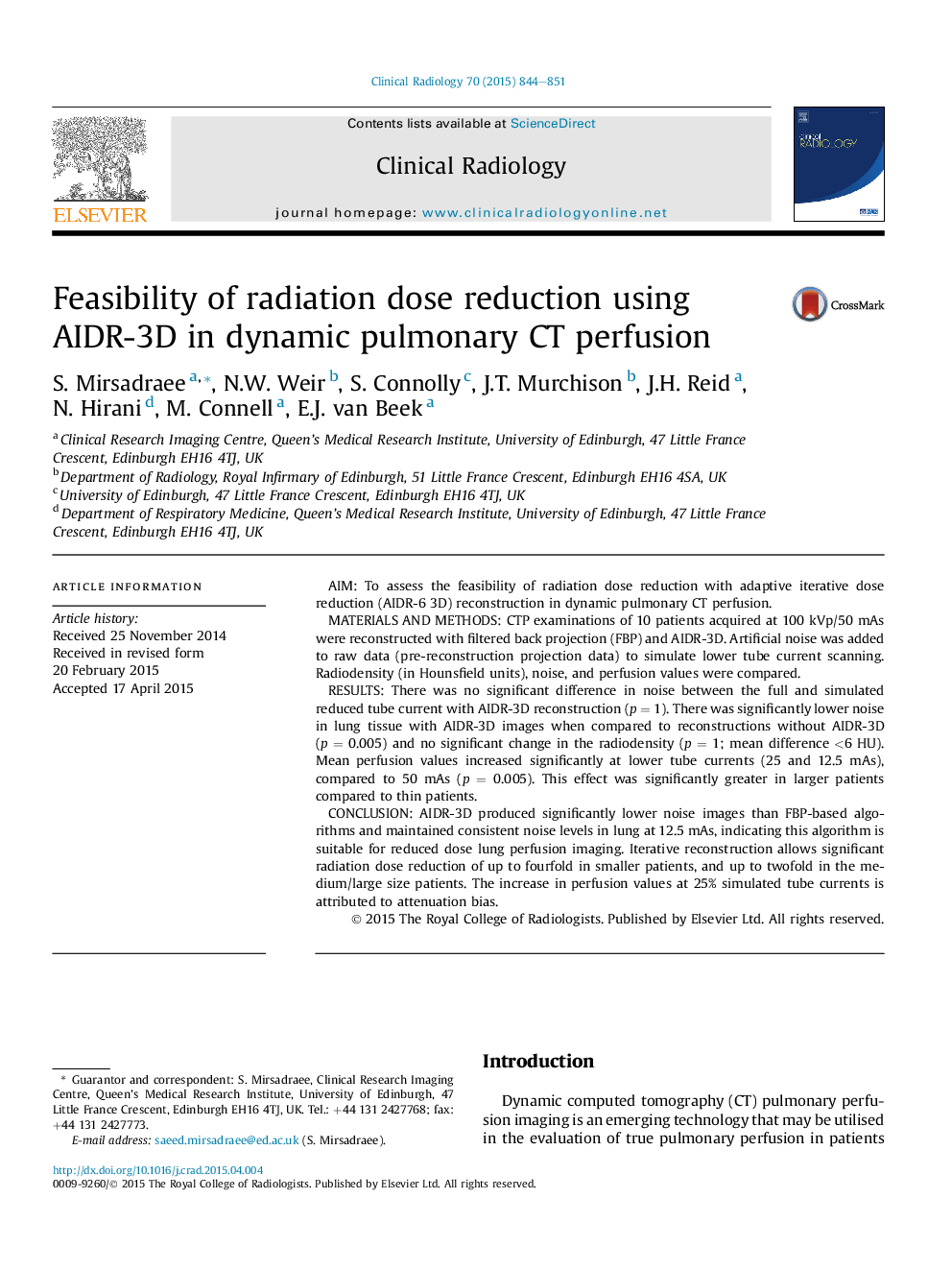| Article ID | Journal | Published Year | Pages | File Type |
|---|---|---|---|---|
| 6190812 | Clinical Radiology | 2015 | 8 Pages |
â¢Dynamic CT provides functional data but at the cost of a higher radiation dose.â¢Doses can be reduced by decreasing tube current but increases image noise.â¢Significant dose reduction is feasible when images are reconstructed with AIDR-3D.â¢There is a limit to how low the dose can be reduced.
AimTo assess the feasibility of radiation dose reduction with adaptive iterative dose reduction (AIDR-6 3D) reconstruction in dynamic pulmonary CT perfusion.Materials and methodsCTP examinations of 10 patients acquired at 100 kVp/50 mAs were reconstructed with filtered back projection (FBP) and AIDR-3D. Artificial noise was added to raw data (pre-reconstruction projection data) to simulate lower tube current scanning. Radiodensity (in Hounsfield units), noise, and perfusion values were compared.ResultsThere was no significant difference in noise between the full and simulated reduced tube current with AIDR-3D reconstruction (p = 1). There was significantly lower noise in lung tissue with AIDR-3D images when compared to reconstructions without AIDR-3D (p = 0.005) and no significant change in the radiodensity (p = 1; mean difference <6 HU). Mean perfusion values increased significantly at lower tube currents (25 and 12.5 mAs), compared to 50 mAs (p = 0.005). This effect was significantly greater in larger patients compared to thin patients.ConclusionAIDR-3D produced significantly lower noise images than FBP-based algorithms and maintained consistent noise levels in lung at 12.5 mAs, indicating this algorithm is suitable for reduced dose lung perfusion imaging. Iterative reconstruction allows significant radiation dose reduction of up to fourfold in smaller patients, and up to twofold in the medium/large size patients. The increase in perfusion values at 25% simulated tube currents is attributed to attenuation bias.
